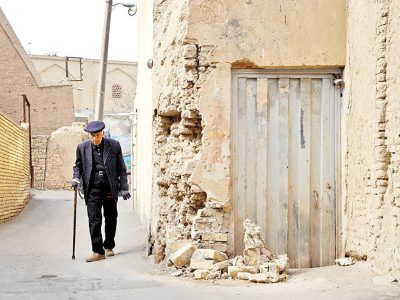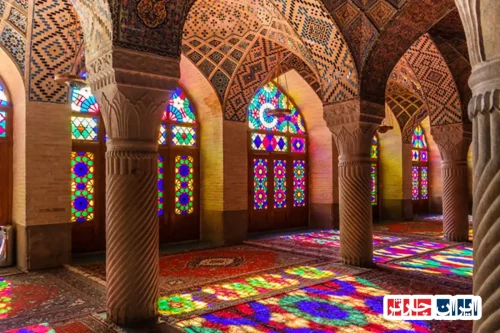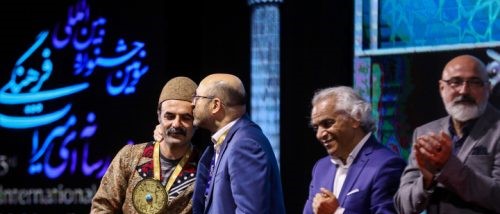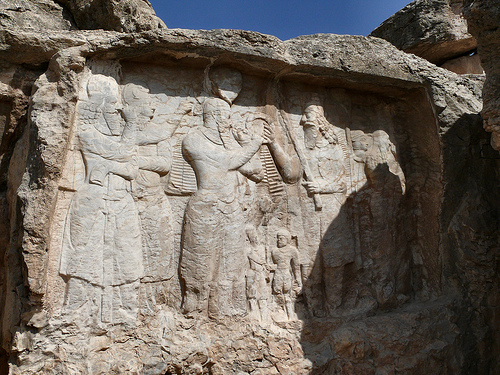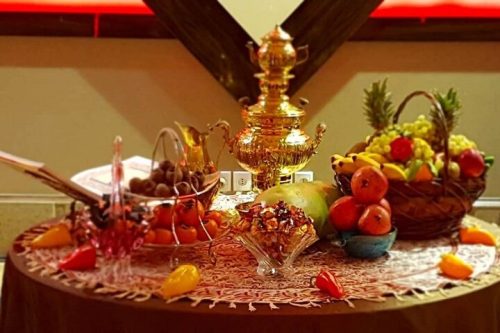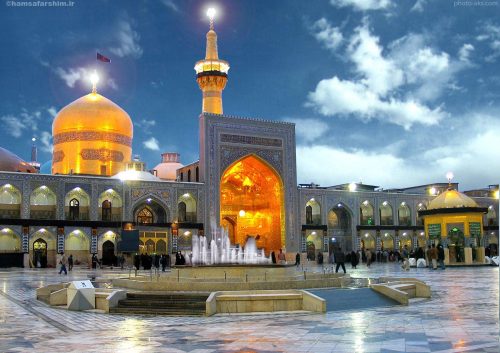News Source : https://www.irna.ir/news/85645332/%D9%86%D8%AC%D8%A7%D8%AA-%DB%B8%DB%B3%DB%B0-%D9%87%D8%B2%D8%A7%D8%B1-%D8%AE%D8%A7%D9%86%D9%88%D8%A7%D8%B1-%D8%B3%D8%A7%DA%A9%D9%86-%D8%A8%D8%A7%D9%81%D8%AA-%D9%87%D8%A7%DB%8C-%D8%AA%D8%A7%D8%B1%DB%8C%D8%AE%DB%8C-%D8%AF%D8%B1-%D8%A7%D9%88%D9%84%D9%88%DB%8C%D8%AA-%D9%82%D8%B1%D8%A7%D8%B1-%DA%AF%DB%8C%D8%B1%D8%AF
Prioritize the Rescue of 830,000 Households Living in Historical Fabrics
In his latest statements, the Deputy Minister of Roads and Urban Development and CEO of Iran Urban Regeneration Company emphasized that the rescue of 830,000 households living in historical fabrics must be prioritized. He added that the country’s historical areas include 330,000 unstable houses placing more than 830,000 households at risk. The Deputy Minister stated that the primary priority should be saving the lives of the residents before focusing on reviving life and vitality in these areas.
Rescue 830,000 Households Living in Historic Fabrics: An Urgent Necessity
Rescuing 830,000 households residing in historical fabrics is an urgent and vital action that requires immediate attention. The historical fabrics of the country include 330,000 unstable homes where over 830,000 households are at risk. This action not only results in the preservation of cultural heritage but also ensures the safety and well-being of the inhabitants of these areas. The Deputy Minister of Roads and Urban Development and the CEO of the Iranian Urban Regeneration Company have emphasized that saving the lives of the residents should precede any actions for revitalizing life in these areas.
The Importance of Saving Households in Historical Fabrics: The Iran Charter Perspective
The Iran Charter emphasizes the importance of saving 830,000 households residing in historical fabrics. These fabrics play a significant role in the country’s cultural identity and tourism. Preserving and saving these households not only helps protect the architectural heritage but also improves the living conditions of the inhabitants and enhances urban quality. Immediate actions should be undertaken to save the lives of these households to rebuild sustainable and lively life in these areas.
Challenges in Saving Unstable Households in Historical Fabrics
Rescuing 830,000 households residing in historical fabrics faces numerous challenges. One of the biggest challenges is the instability of old structures which require extensive rehabilitation and renovations. Additionally, the provision of sufficient funding for these projects and effective cooperation between governmental and private institutions are significant obstacles. Moreover, maintaining a balance between urban development and cultural heritage preservation necessitates precise planning and effective policy implementation.
Government Initiatives for Saving Households in Historical Fabrics
The Iranian government, with the support of the Deputy Minister of Roads and Urban Development and the CEO of the Iranian Urban Regeneration Company, is implementing comprehensive programs to save 830,000 households in historical fabrics. These initiatives include providing low-interest loans for house renovations, creating jobs in regeneration projects, and improving urban infrastructure. Moreover, training programs for residents on optimal resource management and cultural heritage preservation are also underway.
Impact of Saving Households on Economy and Tourism
Rescuing 830,000 households residing in historical fabrics has positive effects on the country’s economy and tourism. The restoration of these fabrics attracts both domestic and foreign tourists, bringing more revenue into the national economy. Additionally, the creation of job opportunities in restoration, architectural renovations, and tourism management also contributes to economic growth. Preserving historical fabrics as cultural tourism attractions plays a crucial role in sustainable economic development.
Community Collaborations in Saving Households and Historical Fabrics
Rescuing 830,000 households in historical fabrics requires widespread community collaboration. Participation of residents, volunteers, and NGOs in regeneration projects can accelerate implementation. Raising awareness and motivation among the public regarding the importance of preserving and saving these households is crucial. Conducting educational courses, workshops, and awareness campaigns can play an active role in promoting community partnerships.
The Role of Municipalities in Saving Households and Protecting Historical Fabrics
Municipalities play a fundamental role in rescuing 830,000 households residing in historical fabrics. They can aid in improving the living conditions of residents by providing urban services, facilitating reconstruction processes, and securing financial resources. Furthermore, municipalities can prevent the destruction of historical fabrics by enforcing environmental laws and protecting cultural heritage. Coordination between municipalities and central authorities is essential to achieving shared goals.
Sustainability and Future of Historical Fabrics Post Household Rescue
The sustainability of historical fabrics post household rescue requires thorough planning and long-term policy implementation. Establishing sustainable infrastructures, utilizing modern technologies in restoration, and preserving the environment are vital factors for the future of historical fabrics. Additionally, enhancing public awareness regarding the importance of preserving cultural heritage and encouraging active participation in conservation efforts can aid in the sustainability and bright future of historical fabrics.
Future Prospects for Saving Households in Historical Fabrics
Future prospects for rescuing 830,000 households residing in historical fabrics are promising. With continued government support, community collaborations, and regeneration project implementations, it is expected that living conditions in these fabrics will improve and urban vitality will be restored. Also, by preserving and rescuing historical fabrics, the country’s cultural identity is strengthened, playing a significant role in attracting tourists and enhancing Iran’s cultural standing on an international level.
How Can We Contribute to Saving Households in Historical Fabrics?
Everyone can contribute to rescuing 830,000 households residing in historical fabrics. Through financial support, participation in restoration projects, or even raising awareness and promoting the importance of cultural heritage preservation, we can partake in this joint effort. Additionally, companies and non-profit organizations can play an effective role in this process by providing specialized assistance and financial resources. Together, through collaboration and brainstorming, we can ensure a bright and sustainable future for the country’s historical fabrics.
Frequently Asked Questions
- How many households are at risk in Iran’s historic fabrics?
- According to Mohammad Ayini, 830,000 households are at risk residing in 330,000 unstable homes in Iran’s historical fabrics.
- What role does Mohammad Ayini play in the rescue of households in historic fabrics?
- Mohammad Ayini is the Deputy Minister of Roads and Urban Development and CEO of the Iranian Urban Regeneration Company, emphasizing the importance of rescuing households living in historical fabrics.
- Where was the first assembly of the Historic Iranian Cities Forum held?
- The first assembly of the Historic Iranian Cities Forum was held at the Constitution House of Isfahan.
- What was the main goal of the first assembly of the Historic Iranian Cities Forum?
- The main goal of the first assembly was to create a platform for experience exchange and strengthen collaboration in the preservation of historical fabrics and enhance the cultural and economic capacities of historic cities.
- How many historic cities participated in the assembly?
- Municipalities from 30 historic cities participated in the first assembly of the Historic Iranian Cities Forum.
- What actions have been proposed to save households in historic fabrics?
- It has been proposed that the rescue of lives of households living in historical fabrics should be prioritized before revitalizing life in these fabrics.
- What is the role of municipalities in keeping historical fabrics alive?
- Municipalities play a key role in keeping cities alive, and besides providing life conditions, they should also focus on revitalizing historical fabrics.
- Whom did Mohammad Ayini thank?
- Mohammad Ayini thanked everyone who played a role in organizing the assembly of the Historic Iranian Cities Forum.
- What should be on the agenda of the Historic Cities Forum?
- The forum should focus on the rescue of lives of residents of historical fabrics and creating vitality in them.
- How can the cultural and economic capacities of historical cities be enhanced?
- By holding meetings and creating collaborations among municipalities, the cultural and economic capacities of historical cities can be enhanced through preservation of fabrics and promotion of local economic activities.
- Why do historical fabrics need regeneration?
- Historical fabrics need regeneration to rescue unstable buildings and maintain the lives of residents, as well as to restore spirit and vitality to these areas.
- What is the exact number of unstable homes in Iran’s historical fabrics?
- The exact number of unstable homes in Iran’s historical fabrics is 330,000.
- What threats exist for historical fabrics?
- Threats include the instability of house structures, inadequate maintenance, and lack of investment for restoration and preservation of these areas.
- Is living in historical fabrics sufficient?
- No, besides providing life conditions, historical fabrics should be revitalized to preserve their spirit and culture.
- What role does the Iranian Urban Regeneration Company play in this project?
- The Iranian Urban Regeneration Company, led by Mohammad Ayini, plays a key role in planning and executing projects of rescue and restoration of historical fabrics.
- What is the difference between rescuing households and revitalizing historical fabrics?
- Rescuing households means preserving and supporting the lives of current residents, while revitalizing historical fabrics means creating dynamic spaces filled with cultural and economic activities.

